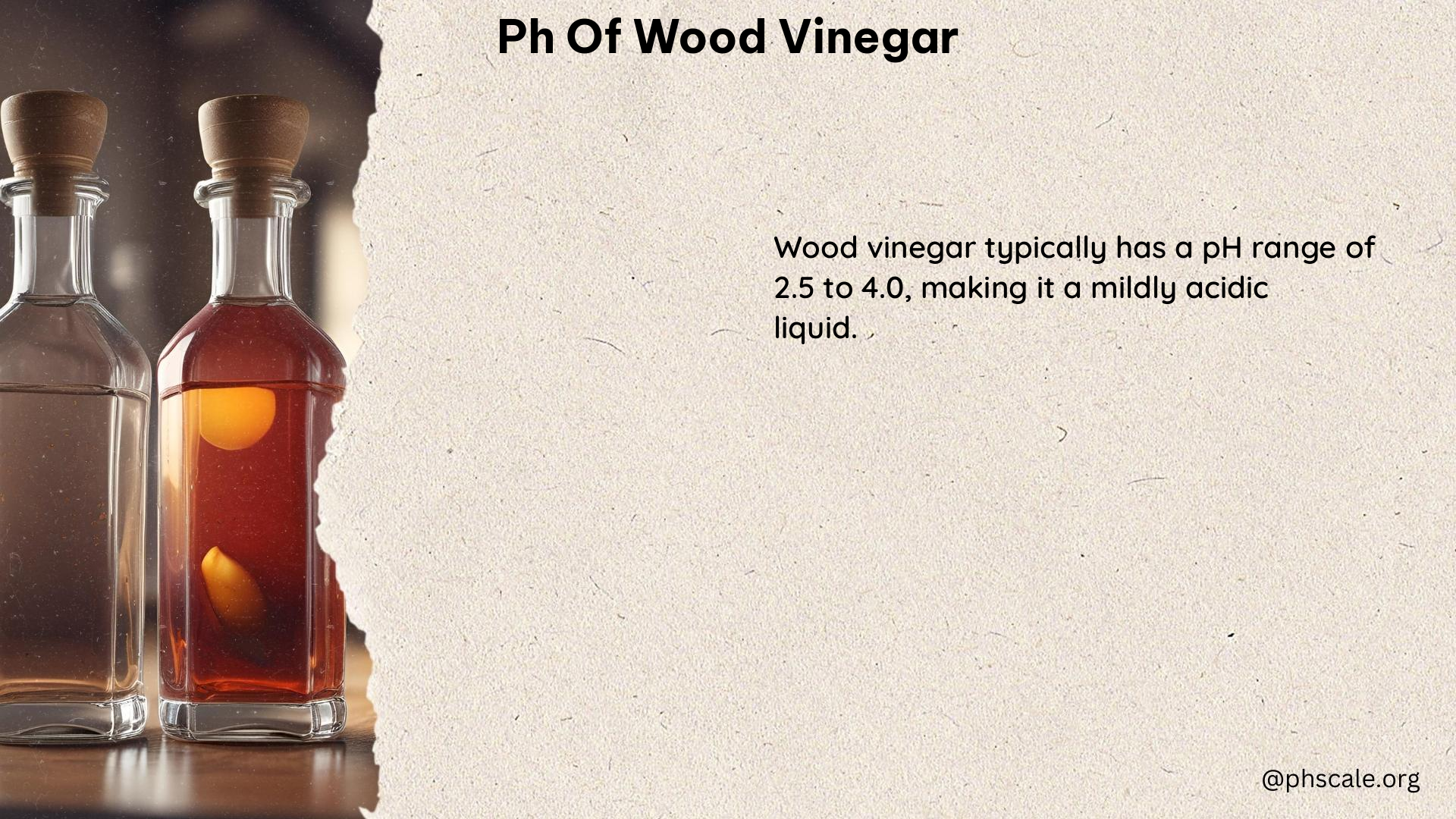Wood vinegar, also known as pyroligneous acid, is a light brownish liquid produced through the natural process of carbonization. This unique compound has a low pH, typically around 3, and contains a wide array of organic compounds, including acetic acid, phenols, alcohols, aldehydes, esters, acetals, ketones, formic acid, vitamin B1, B2, levorotatory dextran, and many others. The pH value of wood vinegar is a crucial factor, as higher extraction temperatures can result in higher acidic values.
Understanding the pH of Wood Vinegar
The pH of wood vinegar is a crucial factor in determining its effectiveness and suitability for various applications. A lower pH, around 3, indicates a higher acidity level, which can have significant impacts on its performance as an organic growth booster, bio-fertilizer, and other agricultural uses.
Factors Affecting the pH of Wood Vinegar
The pH of wood vinegar is influenced by several factors, including:
- Extraction Temperature: Higher extraction temperatures can lead to higher acidic values in the final product, as the carbonization process produces more acidic compounds.
- Tree Species: The type of tree used to produce the wood vinegar can also affect the pH, as different tree species may have varying chemical compositions.
- Extraction Method: The specific extraction method employed can impact the pH, as different techniques may result in the capture of different organic compounds.
Importance of Proper pH Levels
Maintaining the appropriate pH level in wood vinegar is crucial for its effective use in various applications, particularly in the agricultural sector. A pH that is too low or too high can have the following consequences:
- Phytotoxicity: High concentrations of wood vinegar with a very low pH can exhibit phytotoxicity, leading to a decrease in total crop yield, especially in sensitive plants like strawberries.
- Nutrient Availability: The pH of wood vinegar can affect the availability and uptake of essential nutrients by plants, impacting their overall growth and development.
- Microbial Activity: The pH of wood vinegar can influence the activity and composition of soil microorganisms, which play a vital role in nutrient cycling and soil health.
Ensuring the Quality of Wood Vinegar

To ensure the quality and safety of wood vinegar, it is essential to consider the following factors:
- Tree Type: The wood vinegar should be derived from a safe tree type, as some species may contain harmful substances that can be extracted during the carbonization process.
- Extraction Temperature: The extraction temperature should be carefully monitored to prevent the formation of harmful substances in the final product.
- Storage and Handling: The extraction device, storage tank, and containers used to store and handle wood vinegar must be made of acid-resistant materials, such as synthetic resin or high-quality stainless steel, to prevent the liquid from darkening and becoming unsuitable for agricultural use.
Applications of Wood Vinegar with Optimal pH
When wood vinegar with the appropriate pH is used, it can provide a range of benefits for various applications, particularly in the agricultural sector:
Organic Growth Booster and Bio-Fertilizer
Wood vinegar can be used as an organic growth booster and bio-fertilizer substitute, reducing farmers’ reliance on harmful chemicals and protecting the environment from agrochemical pollution. Its low pH helps to reduce the cluster value of water, allowing it to be easily absorbed by plants, which can increase nutrient availability and uptake, crop yield, root mass and foliage development, microbial activity, and soil microbial weight.
Crop Quality Improvement
Wood vinegar can also improve the quality of agricultural products, such as:
- Darker leaves for better photosynthesis
- Improved fruit quality, flavor, color, and firmness
- Enhanced flavor for agricultural end products
Home Remedies and In Vitro Applications
In home remedies, wood vinegar can be added directly to compost worm tea or applied to orchids, where it can show noticeable differences, although the results may take time to become visible. For in vitro crop bioassays, wood vinegar should be diluted to a 1% concentration to promote root growth and avoid potential phytotoxicity.
Conclusion
The pH of wood vinegar is a crucial factor that determines its effectiveness and suitability for various applications, particularly in the agricultural sector. By understanding the factors that affect the pH, ensuring the quality of the wood vinegar, and utilizing it within the appropriate pH range, farmers and gardeners can unlock the full potential of this versatile organic compound to boost crop growth, improve product quality, and promote sustainable agricultural practices.
References:
– Verdilife – About Wood Vinegar
– The Quality of Wood Vinegar
– Agronomic Potential of Wood Vinegar as a Biostimulant for Sustainable Agriculture
– Verdilife Wood Vinegar
– Benefits of Wood Vinegar for Different Crops
